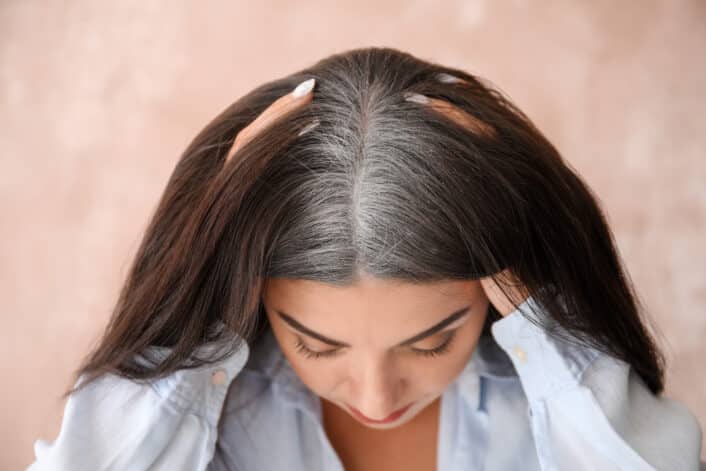

Disclaimer: This article is for informational purposes only and is not intended to diagnose any conditions. LifeDNA does not provide diagnostic services for any conditions mentioned in this or any other article.
Is hair greying simply a sign of aging, or is there more when it comes to genetics and other factors, especially for people in their 20s? This early greying may raise questions about its cause. While genetics certainly plays a major role, other factors like stress, lifestyle choices, and even health conditions may influence when and how grey hair appears. Understanding the genetic and environmental influences behind premature greying can help individuals manage this condition effectively.
You Might Want to Read: How Genetics Influence Your Hair Texture
Hair color is determined by melanin, a pigment produced by melanocytes in hair follicles. When these melanocytes reduce, melanin production stops functioning, and our hair turns grey or white. Several factors influence the timing of this process:
Genetics is the main reason some people experience premature greying. If one or both parents had grey hair early, their children are more likely to go grey earlier too. A 2020 study with nearly 1000 people from Poland explored the genetic factors behind hair greying. Researchers looked at participants’ DNA to identify patterns that could predict when hair turns grey. They created prediction models using age, sex, and 13 specific genetic markers (SNPs). Two of the markers, in genes KIF1A and FGF5, were found to be the most significant, but age still had the biggest influence on when hair greys. Interestingly, the FGF5 gene is also associated with other hair traits, such as hair loss.
Another part of the study confirmed an earlier finding showing that the IRF4 gene SNP rs12203592 gene is linked to premature hair greying. People with specific genotypes of this SNP, containing the t T-allele are more likely to end up with grey hair early. While age is still the most important factor in hair greying, this gene explains a significant part of it. For people under 30, the T-allele increases the chance of grey hair by about 15%. Another variant, MROH2A gene SNP rs2361506, also plays a small role. TOverall, genetic models in this limited study explained less than 10% of the differences in when people’s hair greys, and the individual genes had a small impact on predicting it, with age still being the main factor.Nutritional Deficiencies
Certain vitamins and minerals play a crucial role in melanin production. Deficiencies in these nutrients can contribute to premature greying:
Oxidative stress occurs when there is an imbalance between free radicals and antioxidants in the body. Excess free radicals damage melanocytes, leading to a loss of pigment. This process is influenced by aging but can be worsened by:
Certain health conditions can trigger early hair greying by affecting melanin production:
You May Want to Read: Is Male Pattern Baldness Genetic?
While genetic factors cannot be changed, lifestyle choices may help slow down the process of premature greying. Consider the following preventive measures:
Currently, no medical treatment may reverse natural hair greying, but some options may help manage its appearance:


